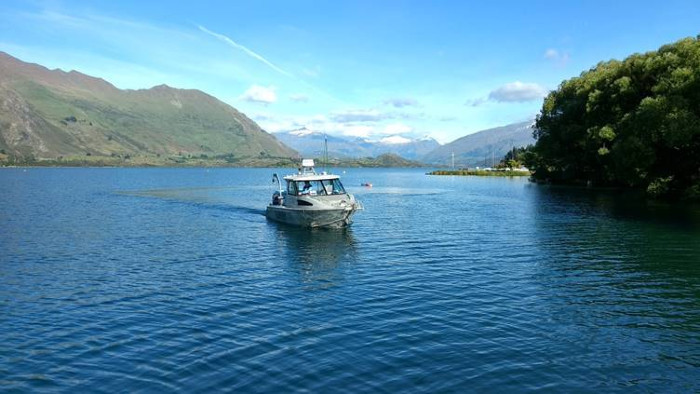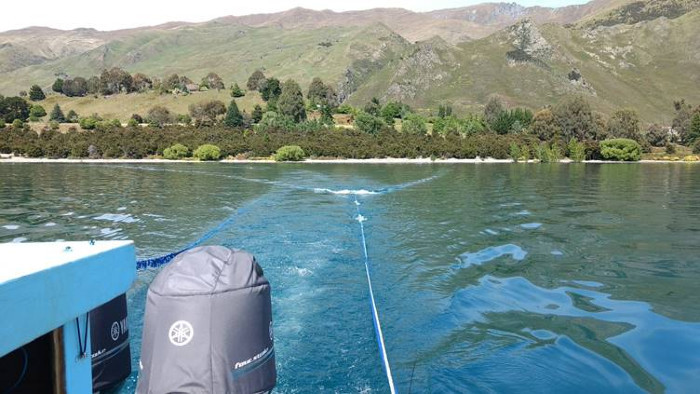More proof of potential earthquake fault under Lake Wānaka
Rowan Schindler
25 February 2021, 7:30 PM
 Scientists have uncovered further evidence of a potential earthquake fault running under Lake Wānaka and the township.
Scientists have uncovered further evidence of a potential earthquake fault running under Lake Wānaka and the township.The survey provides further evidence for a potential earthquake fault running through the township and under the lake.
The results of a seismic mapping project on the bed of Lake Wānaka have provided further evidence of a likely active fault identified in 2019.
The Otago Regional Council (ORC) commissioned the National Institute of Water and Atmospheric Research (NIWA )to undertake the mapping in late 2019, after a desk-based review by GNS Science, also commissioned by ORC, identified the likely fault earlier that year.
The NW Cardrona fault was previously thought to have run northeast from the Cardrona Valley, through Albert Town to Hawea. GNS scientists now propose that the fault runs northwest past the foot of Mt Alpha, beneath part of the Wanaka township, and out under the lake.
The goal of the seismic survey was to find more conclusive evidence of the proposed fault so that the community can better prepare for the effects of a potential earthquake.
NIWA selected to use boomer seismic reflection surveying as the best method to image sediments beneath the lakebed and identify any deformation which could be attributed to faulting.

NIWA researchers on the water at Lake Wānaka in December 2019, using equipment to map sediments beneath the lakebed.
Marine Geologist Dr Joshu Mountjoy from NIWA led the project, and says the new data indicate features that could be related to faulting.
“We have identified large-scale folding of lake sediments, which suggests some deformation or compression of the ground surface immediately past the lakeshore in Roy’s Bay. The data do not unequivocally show there is a major fault here, but the features identified mean it cannot be ruled out.”
ORC Manager Natural Hazards Dr Jean-Luc Payan said the work highlighted the lake tsunami risk presented by faults under Otago’s lakes.
“This research has improved our understanding of the natural hazard risks faced by the Wanaka township.
“While the research is not conclusive, the results of the lakebed mapping provide further supporting evidence of the presence of an active fault beneath Lake Wānaka. This raises the possibility, in the event of an earthquake, that a lake tsunami could be among the hazards faced by the township.
“It’s an important reminder of the tsunami risk associated with earthquakes, not just in coastal areas but inland around alpine lakes as well,” Dr Payan said.

While the research is not conclusive, the results of the lakebed mapping provide further supporting evidence of the presence of an active fault beneath Lake Wānaka.
ORC is planning a range of work over the coming years around lake tsunamis in Otago.
“Part of that will include modelling a lake tsunami scenario in Lake Wānaka to better understand how such an event could affect the township, if the fault runs under the lake as proposed,” Dr Payan said.
“Another component of this work will involve raising public awareness and improving readiness around the potential risks that a lake tsunami would present in the event of an earthquake.”
The recent NIWA report is available here, under ‘Lake Wanaka Faulting Report’.
The full 2019 GNS ‘Active Faults – Central Otago and Queenstown Lakes’ report is available from the same page.
For more on how to prepare for an emergency, visit the Emergency Management Otago website www.otagocdem.govt.nz and for help making an emergency plan visit www.happens.nz.
Photos courtesy NIWA/ORC.


